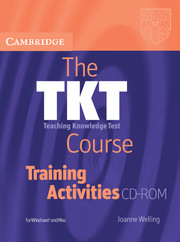2.7 - Supplementary materials quiz
Published online by Cambridge University Press: 09 February 2024
Summary
Instructions
1.Divide the class into three to five teams.
2. Explain that you are going to play a quiz about supplementary materials as a whole group. Explain that you will be the quizmaster and that you will read out clues. Each clue will be a pro (an advantage) or a con (disadvantage) of a supplementary material. From the clues, each team will work together to guess the supplementary material.
3. Have each team invent their own buzzer sound, e.g. ting! or buzz! before play starts. Explain that when they hear a clue, teams may confer amongst themselves, and if they think they know the answer, they should make their buzzer sound.
4. Read out the pro of the first clue. Ask the team that buzzes first to give their answer.
5. If the answer is correct, award the team three points. Then offer one bonus point to any team who can come up with a con for that same supplementary material.
6. If the original answer is not correct, another team may buzz to respond, but each team has only one chance to answer each clue . 7. If no team guesses correctly, the trainer reads out the con as a second clue for the same item. Each team then has another chance to buzz and guess again, as described above (but no bonus points this time).
8. When the quizmaster is ready to move on to a new clue card, the team who won the last point may choose whether to hear a pro or a con first.
9. The game continues until all the clue cards are used up.
- Type
- Chapter
- Information
- The TKT Course Training Activities , pp. 64 - 65Publisher: Cambridge University PressFirst published in: 2024

